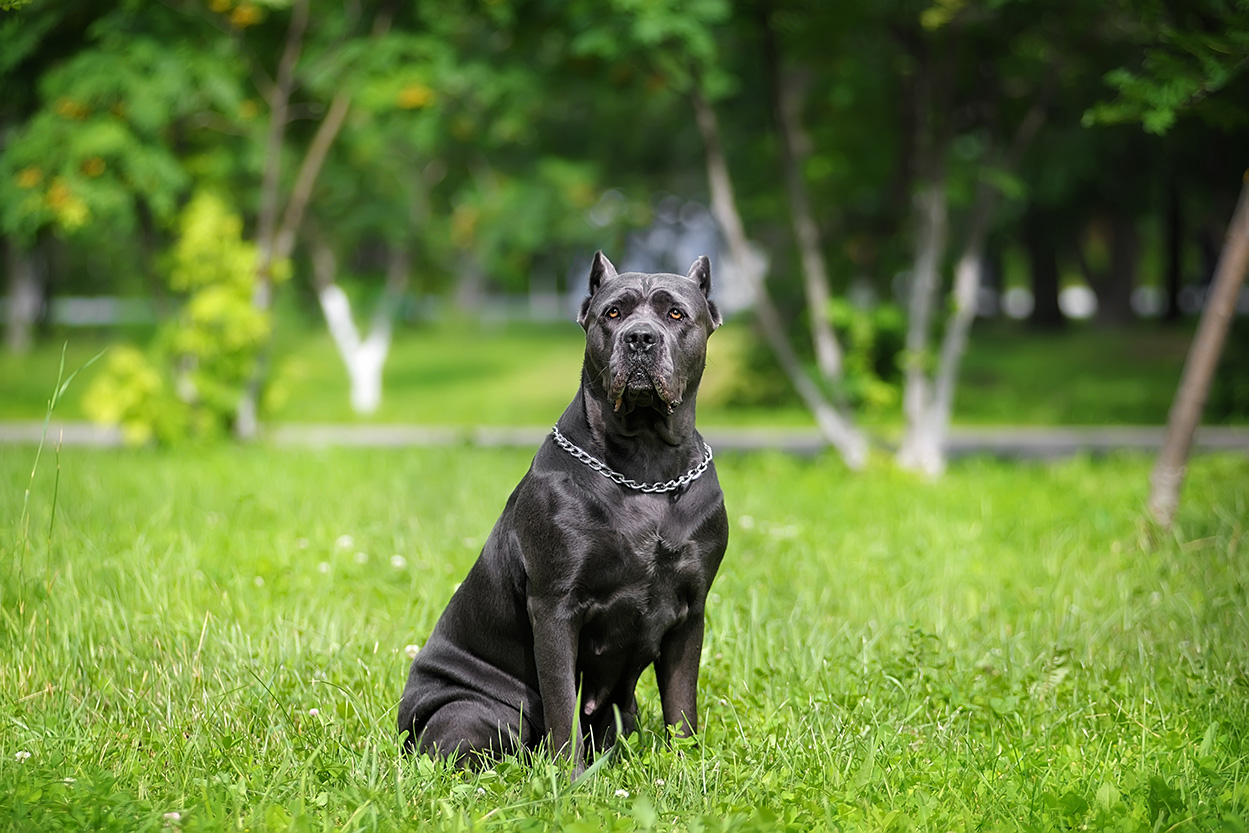Cane Corso

Description
The Cane Corso is a powerful and ancient Italian mastiff breed with roots tracing back to the Roman Empire. Its ancestors were the *Canis Pugnax*, large Molosser dogs used by the Romans as war dogs and guardians. These early dogs were prized for their strength, courage, and loyalty, serving in battles and protecting their handlers. As the Roman Empire declined, the *Canis Pugnax* evolved to adapt to more utilitarian roles, such as guarding estates, hunting large game, and assisting in agricultural work. The name "Cane Corso" is derived from the Latin *cohors,* meaning "guardian" or "protector," reflecting the breed’s historical role as a guardian of livestock and property.
Throughout the Middle Ages and Renaissance, the Cane Corso was a fixture in rural Italy, particularly in the southern regions, where it was a versatile working dog. It excelled at hunting wild boar and other large game, as well as herding cattle and guarding farms. Despite its capabilities, the breed’s population began to decline in the 20th century due to industrialization and changes in agricultural practices. By the 1970s, the Cane Corso was on the brink of extinction, with only a few remaining in remote areas of Italy.
Dedicated breeders and enthusiasts undertook efforts to revive the Cane Corso in the late 20th century. These efforts focused on preserving the breed’s traditional traits of strength, intelligence, and loyalty while standardizing its appearance. The Cane Corso was officially recognized by the Italian Kennel Club (ENCI) in 1994 and later by the American Kennel Club (AKC) in 2010, further cementing its place as a beloved breed internationally.
Today, the Cane Corso is celebrated for its imposing presence, protective instincts, and gentle nature with its family. While it remains a capable working dog, it has also become a cherished companion for those who appreciate its intelligence and devotion. Its rich history, spanning from Roman war dogs to modern-day guardians, reflects the breed’s enduring strength and adaptability.
History
The Cane Corso is a majestic and powerful breed of dog with a rich history that dates back to ancient times. This Italian Mastiff traces its origins to the Roman Empire, where its ancestors were bred for their strength, courage, and versatility. The name "Cane Corso" is derived from the Latin *"cohors,"* meaning "guardian" or "protector," reflecting the breed's role as a guardian of property, livestock, and families. These dogs were often used in war and hunting large game, including wild boar, demonstrating their fearlessness and tenacity.
Following the fall of the Roman Empire, the Cane Corso adapted to the changing needs of rural Italian communities. They became invaluable working dogs, assisting farmers by herding cattle, guarding estates, and even pulling carts. The breed's adaptability and loyalty made it an indispensable part of rural life in southern Italy, particularly in regions like Apulia and Basilicata. Despite their critical role in agricultural communities, the breed's numbers began to dwindle in the 20th century due to the mechanization of farming and changes in rural lifestyles.
By the mid-20th century, the Cane Corso was on the brink of extinction. However, dedicated breed enthusiasts in Italy recognized the need to preserve this ancient lineage. In the 1970s, efforts were launched to revive the breed through careful breeding programs that adhered to traditional standards. These efforts proved successful, and the Cane Corso began to regain its popularity both in Italy and internationally.
In 1996, the Cane Corso was officially recognized by the Italian Kennel Club, and in 2010, the American Kennel Club (AKC) granted it full recognition. Today, the Cane Corso is celebrated worldwide for its intelligence, loyalty, and imposing presence. While it remains a capable working dog, the breed has also become a beloved companion and protector in family settings. Its enduring legacy is a testament to its remarkable qualities and the dedication of those who have worked to preserve this historic breed.
Colors
• Black
• Black Brindle
• Chestnut Brindle
• Fawn
• Gray
• Gray Brindle
• Red


